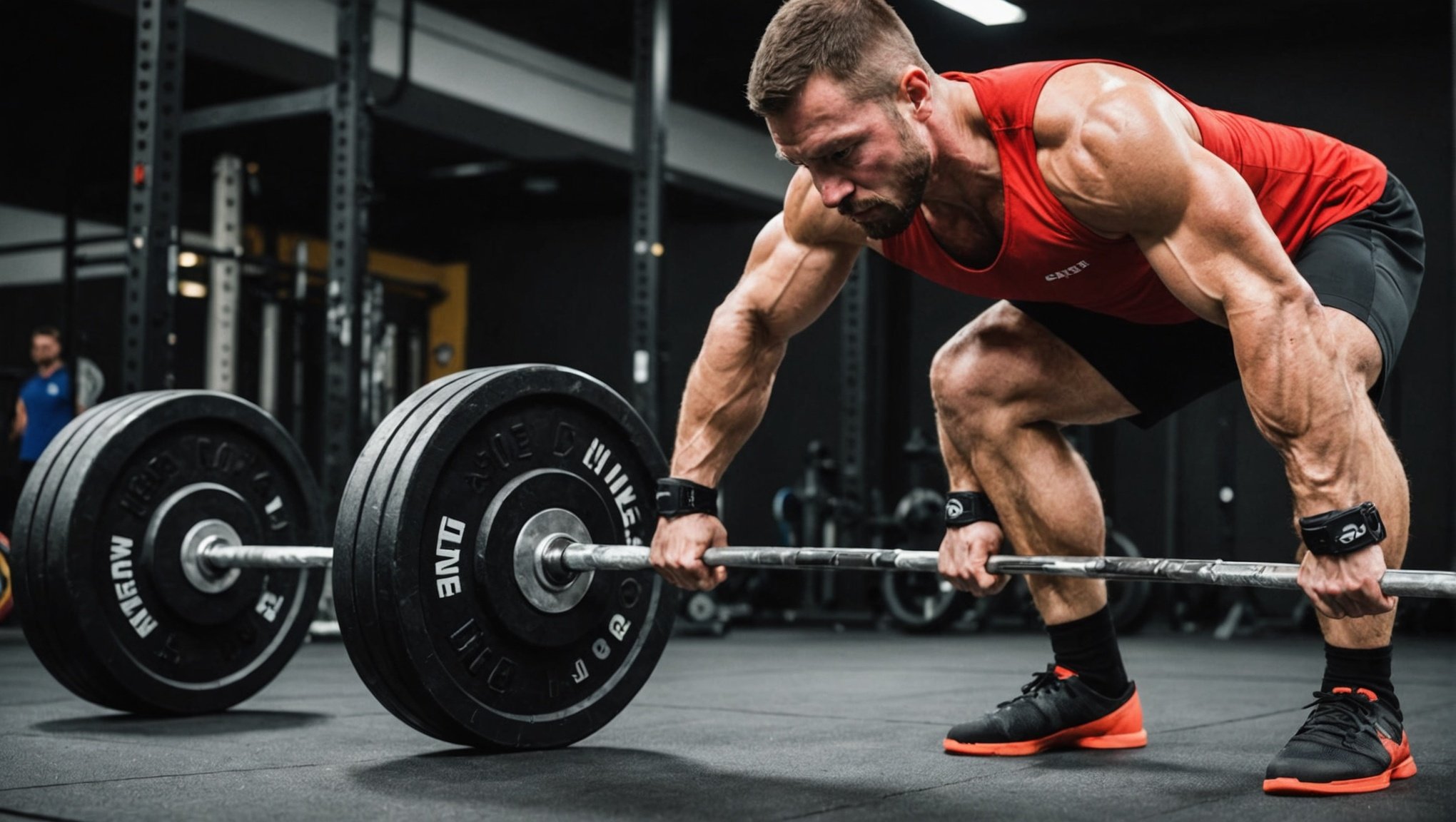When it comes to strength training, the deadlift exercise is one of the quintessential movements to include in your regimen. It’s a highly effective compound exercise that targets multiple muscle groups simultaneously, including your back, legs, and core. However, performing this exercise requires a fair amount of balance and stability, particularly in the ankles. If your ankles are weak or unstable, they can be a significant limiting factor in your deadlift performance. In this article, we will discuss specific ankle stabilization practices that can enhance your deadlift stability, helping you to maximize your power and performance while minimizing the risk of injuries.
The Importance of Ankle Stability in Deadlifts
Before jumping into the specific practices, it’s crucial to understand why ankle stability is so pivotal in deadlifts.
Additional reading : What are the specific benefits of compound versus isolation exercises in a strength routine?
The ankle joint plays a vital role in many daily activities, including walking, running, and jumping. Similarly, in exercises like deadlifts, the ankle serves as a fundamental base of support. This joint is responsible for transmitting the forces generated by your body to the ground, and vice versa.
In the deadlift, the stability of your ankle can directly influence your movement quality, force production, and overall performance. If the ankle is unstable, it can lead to compensatory movements in other parts of the body, potentially causing an imbalance in muscle activation and increasing the risk of injuries. Therefore, incorporating targeted ankle stabilization practices into your training routine can significantly enhance your deadlift stability, leading to improved performance and safety.
Topic to read : What are the top exercises for maximizing gluteal activation during lower body workouts?
Developing Ankle Strength with Resistance Exercises
Resistance training is a highly effective way to improve ankle stability. By challenging your muscles with external resistance, you can stimulate muscle growth and strength, enhancing your body’s ability to control movement and resist instability.
For the ankle, isolation exercises such as heel raises, toe walks, and resistance band exercises can target the specific muscles that contribute to ankle stability. For instance, the calf muscles—comprising the gastrocnemius and soleus—are critical for maintaining ankle stability, and exercises like seated and standing calf raises can effectively strengthen these muscles.
However, remember to maintain an appropriate balance between strength and flexibility. While strong muscles can provide more support, overly tight muscles can reduce your range of motion and increase the risk of injuries. Therefore, pair your strengthening exercises with regular stretching to maintain good flexibility and enhance overall ankle function.
Improving Balance with Stability Exercises
Another critical element in ankle stabilization is balance training. Having good balance means being able to control your body’s position, especially during movement or while maintaining a posture. Enhancing your balance can significantly improve your ankle stability and, consequently, your deadlift performance.
Stability exercises such as single-leg stands, heel-to-toe walks, and balance board exercises can challenge your balance and train your body to adapt to instability. These exercises can stimulate the small, intrinsic muscles in your foot and enhance proprioception—the body’s awareness of its position and movement—which plays a crucial role in maintaining balance and ankle stability.
Moreover, these exercises can be easily integrated into your daily routine or training program. Start with simple exercises and gradually increase the difficulty as your balance improves.
Enhancing Core Stability for Better Deadlift Performance
While the ankle serves as the base of support in deadlifts, the core—comprising the muscles in your abdomen, lower back, and hips—acts as the central hub that controls and transfers forces between the lower and upper body. Therefore, enhancing core stability can significantly improve your deadlift stability and performance.
Core exercises such as planks, bridges, and bird dogs can strengthen the core muscles and enhance their ability to stabilize the trunk during movement. By improving your core stability, you can better control your body during deadlifts, reducing the need for compensatory movements and reducing the risk of injuries.
Remember, consistency is key in core training. Incorporate core exercises into your regular training routine and perform them with correct technique for maximum effectiveness.
Incorporating Functional Training for Comprehensive Ankle Stabilization
Finally, functional training—exercises that mimic real-life movements—can provide comprehensive ankle stabilization and enhance your deadlift stability. Functional exercises such as lunges, squats, and step-ups can train your ankle in various planes of motion, improving its ability to stabilize during dynamic movements.
Additionally, these exercises can also target multiple muscle groups simultaneously, promoting more balanced muscle development and enhancing overall movement quality. By incorporating functional training into your routine, you can improve your ankle stability in a more comprehensive and practical way, enhancing not just your deadlift performance but also your overall fitness and daily function.
Remember, ankle stabilization doesn’t happen overnight. It requires consistent effort, practice, and patience. However, by incorporating the practices discussed in this article into your training regimen, you can significantly enhance your ankle stability, improve your deadlift performance, and take your strength training to the next level.
Ankle Stabilization on Unstable Surfaces
Adding unstable surfaces to your training can add a new challenge for your ankles and help to further enhance their stability. Exercises on unstable surfaces can stimulate more muscle activation, improve balance training, and promote proprioception, thus enhancing ankle stability.
Unstable surface training involves performing exercises on an unstable, non-fixed surface, such as a balance pad, Bosu ball, or wobble board. When you perform exercises on these surfaces, your body needs to continually adjust to maintain balance, which can help to strengthen the stabilizing muscles in your ankles and improve their stability.
For instance, you can perform single-leg exercises like single-leg deadlift or lunges on these surfaces to challenge your ankle stability. These exercises not only strengthen your ankles but also promote balanced muscle development in your lower extremity.
Research studies available on Google Scholar and PubMed have suggested that unstable surface training can be effective for preventing ankle sprains and improving ankle instability. However, it’s essential to progress gradually with this type of training to avoid injuries. Always ensure that you can perform the exercise correctly on a stable surface before moving onto an unstable one.
Reviewing Scientific Evidence on Ankle Stabilization Practices
It’s also beneficial to stay updated on the latest scientific research regarding ankle stabilization practices. Research studies available on Google Scholar and PubMed can provide insights into the effectiveness of different practices, their potential benefits and risks, and recommendations for their implementation.
For example, studies have shown that balance training and strength training can effectively improve ankle stability, reduce the risk of ankle sprains, and enhance performance in exercises like the deadlift. Moreover, these studies suggest that incorporating a combination of practices, including resistance training, balance exercises, core stability exercises, and functional training, can provide more comprehensive benefits.
However, as with any exercise practice, it’s crucial to consider individual differences, needs, and goals. What works best for one person may not work as well for another. Therefore, it’s recommended to approach ankle stabilization with a personalized approach—incorporating practices that suit your individual needs and capabilities, and adjusting them as necessary based on your progress and response.
In Conclusion: The Key to Enhanced Deadlift Performance
In conclusion, enhancing ankle stability is key to improving your deadlift performance. By incorporating specific ankle stabilization practices into your training regimen, such as resistance exercises, balance training, core stability exercises, and functional training, you can significantly enhance your ankle stability and deadlift stability.
Moreover, by incorporating exercises on unstable surfaces and staying updated on scientific research, you can further optimize your training practices and results. As you continue to improve your ankle stabilization, you can expect to see improvements in your deadlift performance, lower the risk of low pain in the lumbar spine, and reduce the risk of injuries.
However, remember that improving ankle stability isn’t a quick fix—it takes consistent effort, practice, and patience. It’s not about achieving immediate results, but about making steady progress towards better performance and health. So, keep up the good work and stay dedicated to your strength training and ankle stabilization practices. Your ankles—and your deadlifts—will thank you!











